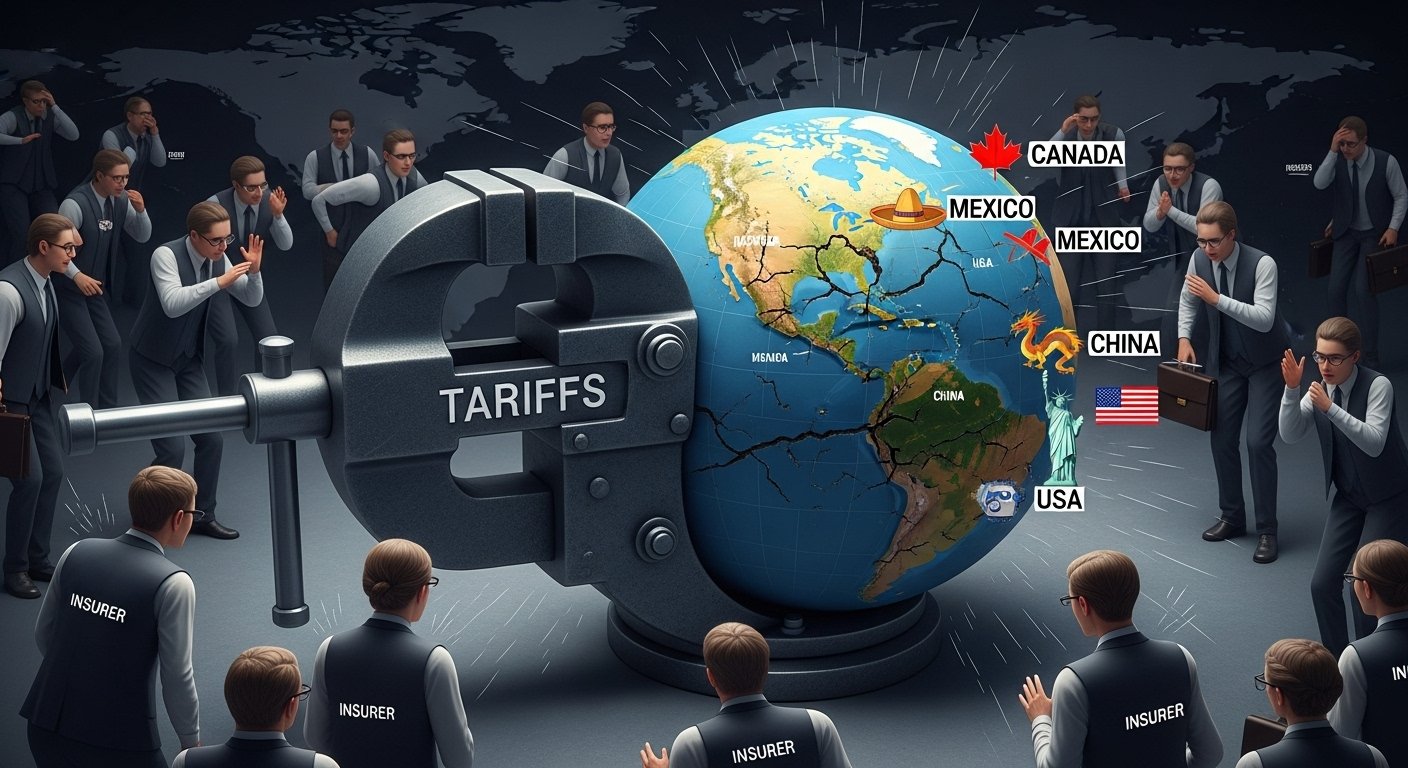Tariffs imposed on Canada, Mexico, and China could indeed create pressure on U.S. insurers, particularly in the property and casualty (P&C) and reinsurance sectors. Here’s how:

1. Increased Costs for Insurers
- Higher Material Costs: Tariffs on goods imported from these countries, such as steel, aluminum, and electronics, can increase the cost of raw materials used in construction, manufacturing, and repairs. This could lead to higher claims costs for insurers, especially in areas like auto, property, and commercial lines, where repairs and replacements are necessary.
- Supply Chain Disruptions: Tariffs may disrupt supply chains, leading to delays in repairs or replacements. Insurers might face higher costs due to extended claims processing times or increased use of alternative, more expensive suppliers.
2. Impact on Reinsurance
- Reinsurance Costs: Many U.S. insurers rely on global reinsurance markets, including reinsurers based in Canada, Mexico, and China. Tariffs or trade tensions could increase the cost of reinsurance or reduce its availability, putting pressure on insurers’ profitability.
- Currency Fluctuations: Trade tensions can lead to currency volatility, which may affect reinsurance contracts priced in foreign currencies. This could create additional financial uncertainty for insurers.
3. Economic Slowdown and Reduced Demand
- Trade Wars and Economic Uncertainty: Prolonged trade tensions could slow economic growth, reducing demand for insurance products. For example, businesses may delay expansions or investments, leading to lower demand for commercial insurance.
- Consumer Spending: Higher prices for imported goods could reduce disposable income for consumers, potentially leading to lower demand for personal insurance products like auto or homeowners insurance.
4. Sector-Specific Impacts
- Auto Insurance: Tariffs on steel and aluminum can increase the cost of vehicle repairs and replacements, leading to higher claims costs for auto insurers.
- Property Insurance: Construction costs may rise due to tariffs on building materials, increasing the cost of property repairs and replacements after events like hurricanes or wildfires.
- Cyber Insurance: If tariffs affect the cost of electronics or software imports, businesses may face higher costs for cybersecurity measures, potentially increasing claims in the cyber insurance market.
5. Regulatory and Legal Challenges
- Regulatory Scrutiny: Insurers may face increased regulatory scrutiny if they attempt to pass on higher costs to policyholders through premium increases.
- Legal Disputes: Trade disputes could lead to legal challenges or disputes over coverage, particularly in areas like trade credit insurance or business interruption insurance.
6. Opportunities for Insurers
- Product Innovation: Insurers may develop new products or adjust existing ones to address emerging risks related to trade tensions, such as supply chain disruption coverage.
- Market Shifts: Some insurers may benefit from shifts in manufacturing or trade patterns, such as increased domestic production, which could create new opportunities for coverage.
Conclusion
Tariffs on Canada, Mexico, and China could create significant challenges for U.S. insurers, particularly in terms of increased costs, supply chain disruptions, and economic uncertainty. However, insurers that adapt quickly to changing market conditions and develop innovative solutions may be able to mitigate some of these pressures. Monitoring trade developments and their broader economic impacts will be crucial for insurers in the coming years.
